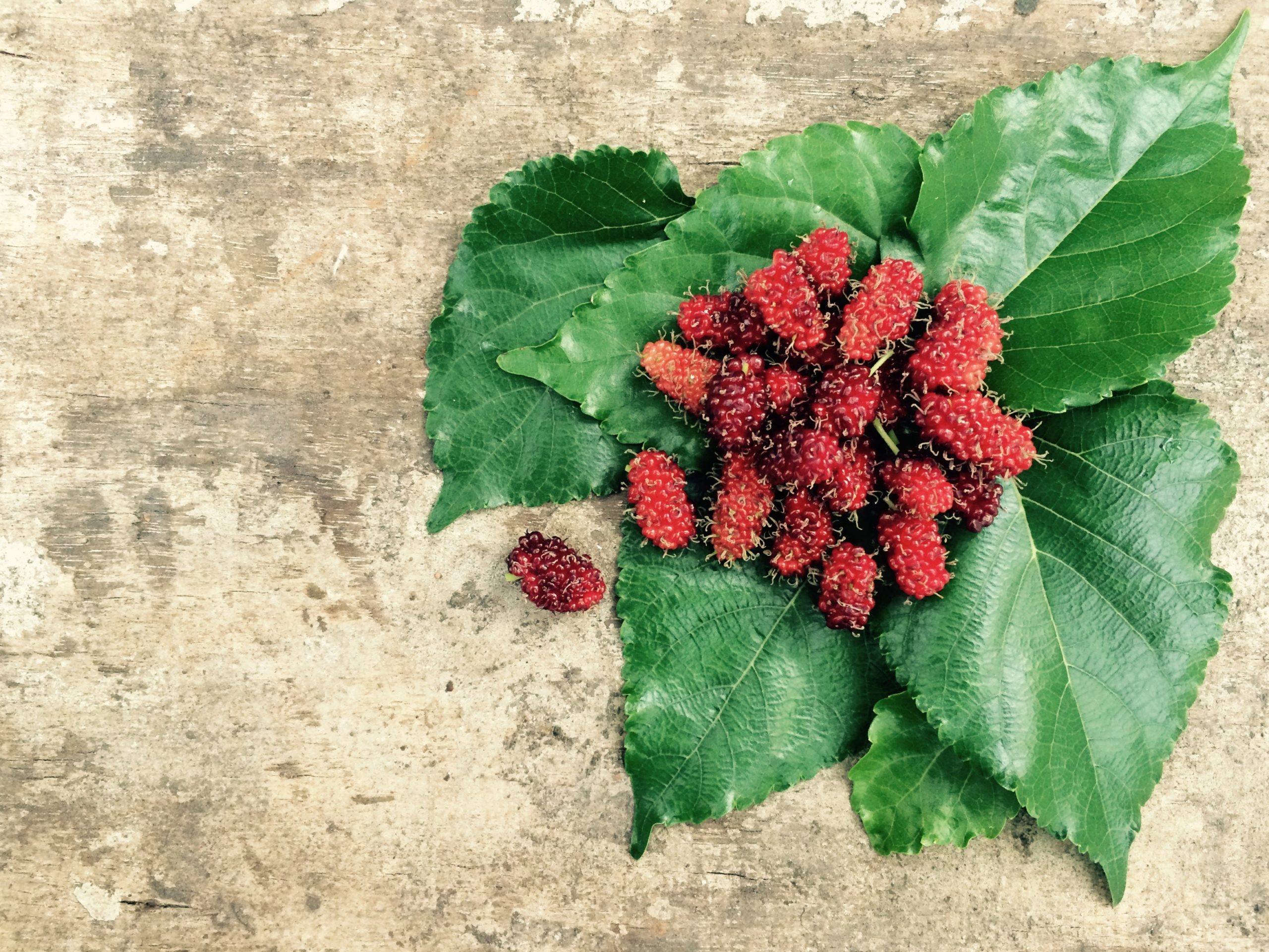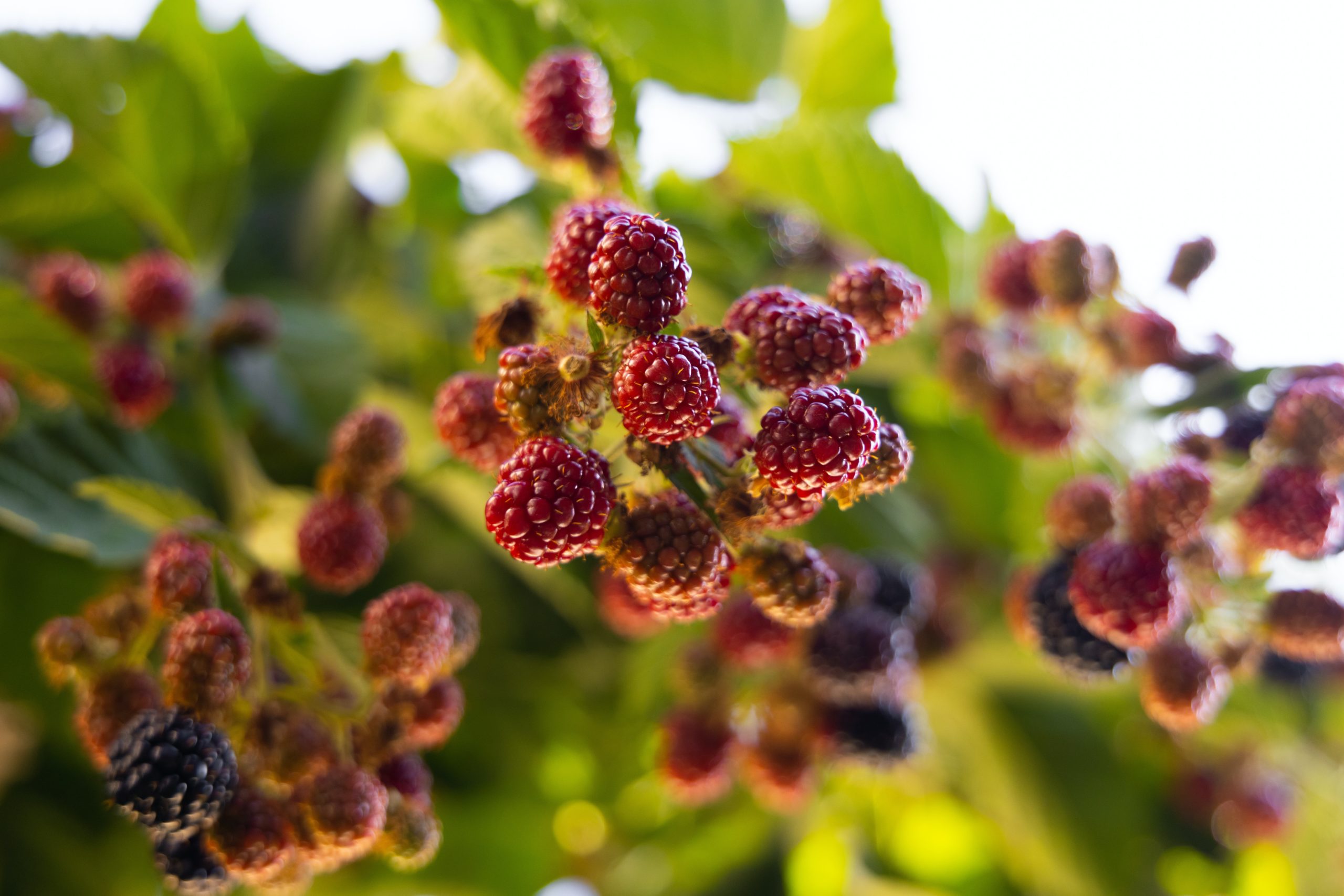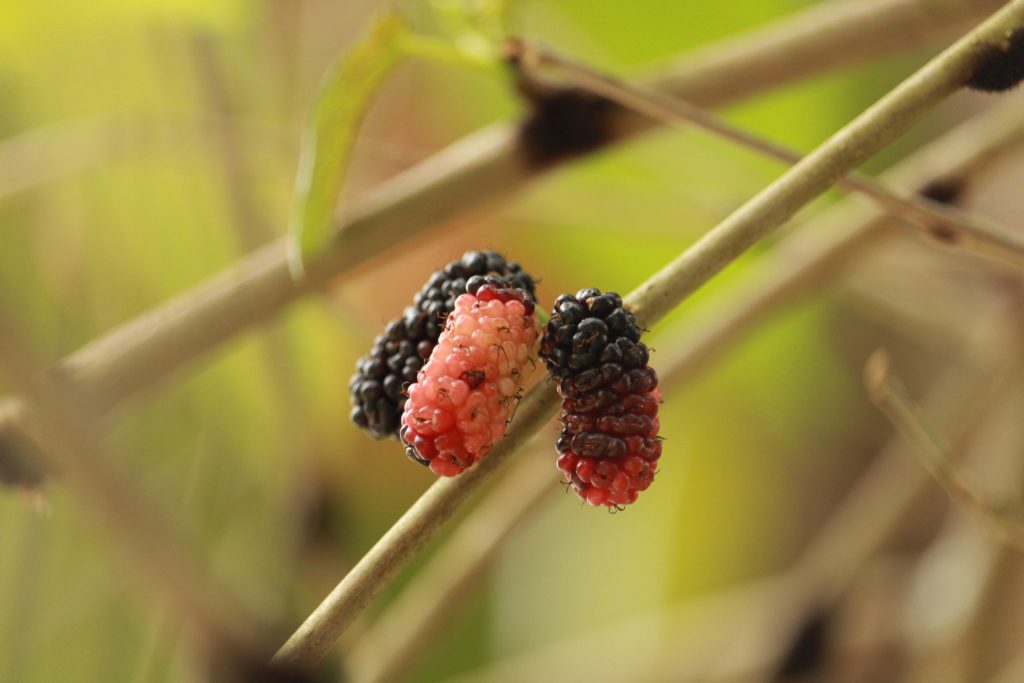Mulberries grow on trees, not bushes. These fast-growing trees produce a massive amount of fruit each season, ranging in color from white to deep red to almost black. Mulberries are soft berries that grow in China and most of the U.S. You will most likely taste them in jam or syrup form (or, increasingly, dried) rather than fresh. But they just aren’t made to withstand long journeys.
A few weeks in late spring and early summer are good times to eat mulberries. The fruit can be pies, tarts, wines, and cordials. But because they only grow for a short time, we can only taste their slightly sour and refreshing flavor for a short time. The easiest way to keep mulberries so you can eat them all year is to freeze them. Mulberries almost always have a small piece of the stem when they fall off the tree, and you can leave the stems on or remove them before you freeze them.
What are Mulberries?
You may have seen these fruits before and not know what they were: The darker versions of this soft fruit leave behind wine-colored stains on sidewalks and fingers. The trees are huge, easy to grow, and can thrive in temperate to tropical areas worldwide. Even birds like them. They look like blackberries that are longer.
Morus is the scientific name for mulberries and the name of a genus of flowering plants in the family Moraceae. The most common ones are the white mulberry from China but grow in the 48 contiguous United States. The black mulberry, which is from western Asia but also grows in Europe, and the American or red mulberry, which is from North America (native to the eastern U.S.).
Fun facts: “white” refers to the buds, not the color of the fruit, and the plant was brought to America to help the silkworm industry because it is the only food silkworms eat. These berries have thin skins and need special care because they go bad quickly, which is why they are expensive and should be eaten immediately.
What do they Taste Like?
The white ones taste very sweet, while the darker ones taste sweet and sour. You can eat any of them by themselves, but what they may lack in terms of a balance of sweet and sour flavors, they make up for in quantity. Dried mulberries are very sweet and make granola and trail mix more interesting. Mulberries taste sweet and sour, and sometimes they hint at baking spices or cedar. The fruits have a strong smell and deep colors. They are soft and sticky, and even a light touch can make them stain.
How do you Use Mulberries?
Fresh berries are the best, and if you have a mulberry tree in your yard, can easily find them in the wild, or find them at a farmers market, you should eat them all. Make jam, smoothies, cobblers, sauces for dessert, and mulberry wine with them. Your sweet tooth can be satisfied by nature, as mulberry pie or even ice cream might do the trick. As a superfood, the white variety is becoming increasingly popular and sold in health food stores. Dried mulberries are great in smoothies, trail mix, oatmeal, granola, and right out of the bag as a snack.
Uses of Frozen Mulberries
You can use frozen mulberries in many ways, like smoothies, baked goods, and jam. You can mix mulberries straight from the freezer with milk (or an alternative to milk), yogurt, honey, or any other sweetener you like. Because the berries are frozen, your smoothie will be thick and cold, like a milkshake.
You can also make pancakes, muffins, and quick bread with frozen mulberries. Even though the mulberries will cook with the rest of the ingredients, berries that start frozen won’t lose their color as much as berries that aren’t frozen. For making mulberry jam and other sweet preserves, frozen mulberries are just as good as fresh ones. Please put them in the freezer during harvest time and make jam when you have time.
How to Freeze Mulberries?
If you don’t eat them all, you can keep them in the fridge for two to three days if you don’t wash them and put them in a container with a lid. When life gives you lemons, you make lemonade, as the saying goes. And when mulberry trees give you more fruit than you can eat, or if you’re lucky enough to have friends with trees who give you extra fruit, you make jam.
But you can only make so much money. So, freezing comes into play. You can keep these berries in the freezer for six months. You can put them in smoothies while they are still frozen, or you can put them in a yogurt-granola parfait and put it in the fridge. Their color and flavor will naturally spread through the yogurt as they defrost.
Mulberries are only available for a few weeks at the end of spring and the beginning of summer. The fruit goes into making pies, tarts, wines, and cordials. But because the season is short, we can only enjoy the berries’ slightly sour and refreshing taste for a short time.
The easiest way to keep mulberries around all year is to freeze them. Mulberries almost always have a bit of stem when falling off the tree, and you can either leave the stems on or take them off before freezing.
Wash the Mulberry
Before you freeze the mulberries, you should wash them to eliminate any bacteria that might be on them, like salmonella, E. coli, or norovirus. Pour cool water over the berries and drain them in a colander for a few minutes.
Single-Layer Freeze
If you freeze the berries in a single layer, they will stay separate after freezing. Spread clean, whole mulberries in a single layer on a baking sheet or a plate. Cover the fruit and put it in the freezer for at least 2 hours, or until it is completely solid.
Transfer to Freezer Containers
Once the berries are frozen, you can put them in BPA-free containers or freezer bags that are not made of plastic. Label the containers and write the date on them. Mulberries can be kept in the freezer for up to six months. Even after six months, they are still safe to eat, but their quality and taste worsen.
Where to Buy Mulberries?
Even though mulberries are tasty, they are fragile, spoil quickly, are hard to pick, and don’t all ripen simultaneously. These things make it hard to grow and harvest these berries for business purposes. You won’t usually find them in a grocery store unless it’s a local specialty or a gourmet store.
If you are lucky enough to have a tree, you can pick them up by hand when they are ready. Put a tarp under the tree and gently shake the branches to make the ripe fruit fall to the ground. Some may fall off, while others may stay on the stem. They don’t all ripen simultaneously, and some that are ready to be picked may need a little help.
If not, you must go to a farmers market or specialty grocery store, where they can sometimes be sold for a lot of money. Dried mulberries are often sold in the bulk of health food stores or natural and organic grocery chains. You can also buy a lot of them online.
Mulberries vs. Blackberries
It’s easy to mix up these two fruits and use one instead of the other in recipes, but let’s break it down. The shape of mulberry is almost like that of an oval blackberry, and almost all blackberries are round. If mulberries aren’t white, they can be red to dark purple. On the other hand, blackberries can be very dark purple to black, which is how they got their name.
Mulberries grow on trees that lose their leaves in the fall, while blackberries grow on thorny bushes. When you pick blackberries, the stem usually stays on the plant, and the spongy part it’s attached to stays inside the fruit. On the other hand, when you pick mulberries, some of the stems may come off with the fruit.
Using Thawed Mulberries
You can use frozen mulberries to make sorbet or ice cream, but you must let them thaw first. You can also let frozen mulberries thaw and blend them into a sauce to put on yogurt, cake, or fresh fruit. If you want to make the mulberry taste stronger, you can add a little honey, sugar, or lemon juice.
More About Mulberries
Mulberries are very different, making it hard to give a general description. However, as a general rule, mulberries grow very quickly when they are young, but their growth rate slows as they age. The mulberry has a milky sap that makes it stand out, flowers that look like long, trailing catkins, and edible clusters of fruit that look like blackberries. Mulberry trees are deciduous, meaning their leaves fall off in the winter. The leaves of a mulberry tree tend to be simple and often have lobes.
Three main mulberry types are grown worldwide, but there are many other species as well. The berries of black mulberries are dark purple to black, while the berries of red mulberries are red, and the berries of white mulberries are white. Before the fruit is ripe, it is always very bitter. Mulberry trees can be very pretty when they are used as decorations.
They rarely grow taller than 12 meters (40 feet) and can be pruned and trimmed to make any shape you want. Many people like mulberries to grow because they can eat the fruit, and the leaves look nice. The only bad thing about ornamental mulberries is that they can get messy if you don’t use the fruit. Mulberries vary in how hardy they are, depending on the type.
Some people can handle very cold weather and hard winters, but others would rather not deal with temperatures below freezing. If you want to grow mulberries, you should ask the staff at a local nursery which varieties will do best in your area. This will help you get a hardy, strong tree.
Conclusion
Mulberry is a plant in the genus Morus. This genus is made up of many different trees and shrubs that are grown all over the Northern Hemisphere. The mulberry is not only a pretty plant, but it also has some good commercial uses that have made it a long-lasting favorite. Mulberry plants can be bought at many garden supply stores and nurseries or ordered on demand.
A 3 1/2-ounce serving of raw mulberries has 43 calories, 14 percent of your daily iron needs, and up to 44 percent of your daily vitamin C needs. Different kinds of nutritional supplements are made from fruit and leaves. Some people think that resveratrol, which is found in large amounts in the stem bark of a mature plant, can help people live longer.


